
A Taste of Treviso: Discovering Authentic Veneto Cuisine
November 18, 2023
Delve into the flavors of Treviso. Discover traditional dishes, local specialties, and culinary secrets from the heart of Veneto.
By: Nicole Dickerson / Last updated: April 27, 2024
Estimated reading time: 14 minutes
Le Marche is often overlooked in favor of its more well-known neighboring regions, such as Emilia-Romagna and Tuscany. Consequently, Le Marche remains an undiscovered gem for culinary travelers. The region is bordered on the east by the beautiful Adriatic Sea, where seafood heavily influences the cuisine. Moving inland towards the east, one encounters verdant rolling hills that reach the foothills of the Apennines, with Umbria flanking most of Le Marche’s western border. As the landscape changes, so does the cuisine, featuring rich pasta dishes, stews, grilled meats, and salumi. Deep-frying is prevalent, with many regional specialties fried to a delicious crisp.
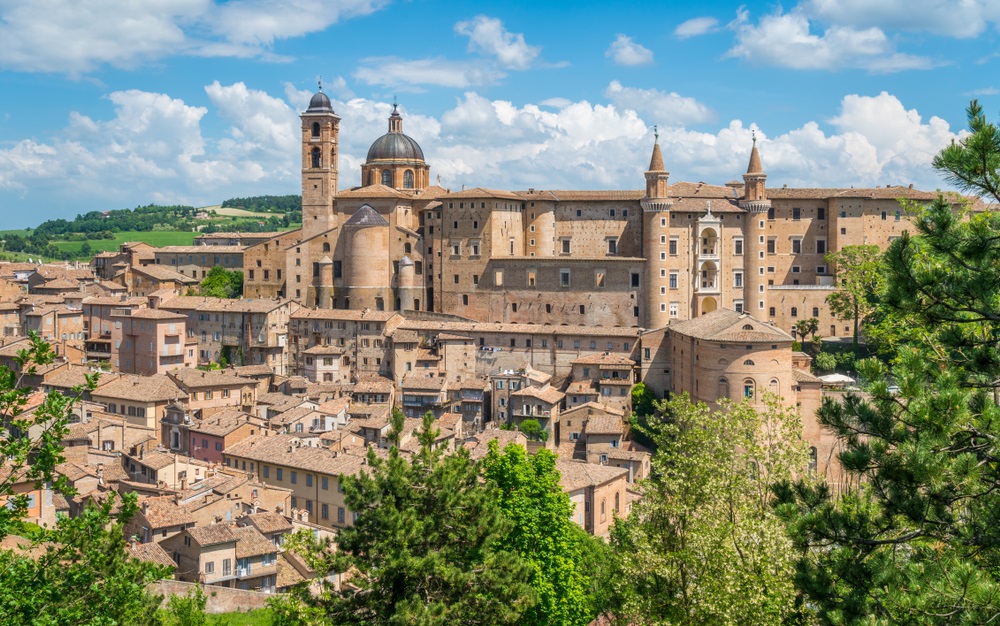
Guide to Italian Gastronomy and Cuisine: Read more
As with other regional Italian cuisines, Marche cuisine originated in the philosophy of cucina povera, emphasizing no waste and local, seasonal ingredients. Le Marche is known for its olives and high-quality olive oil, especially the olio extravergine di Cartoceto DOP, which has slightly bitter notes and spicy fruitiness. In addition, the region’s fresh produce stars in several traditional dishes featuring staple ingredients like mushrooms, artichokes, cauliflower, and Le Marche’s prized black and white truffles.
While salumi often steals the show in Le Marche’s culinary scene, the region boasts several must-try cheeses. Casciotta d’Urbino, a favorite of Michelangelo, is a PDO-protected cheese from the Pesaro Urbino province. Typically made from sheep’s milk with a small addition of cow’s milk, it has a semi-soft, crumbly texture and a pleasant, grassy flavor. Another notable cheese is Pecorino dei Monti Sibillini, protected by the Slow Food Presidium. Produced in the Sibillini Mountains, this sheep’s milk cheese is aged for at least twenty days and up to one year. Common additions like basil, cloves, nutmeg, and black pepper enhance its flavor in Le Marche’s culinary tradition.
Formaggio di Fossa, known for its strong flavor, hails from the Apennine foothills. Made with cow’s milk, sheep’s milk, or a mixture of both, it undergoes a unique aging process. The cheese is placed in cloth bags and set into limestone pits, aging underground for 80-100 days. Traditionally, the pits are opened on November 25th, the Feast of Caterina, resulting in a cheese with a highly aromatic intensity.
Le Marche also offers other popular cheeses, such as slattato, a cow’s milk cheese characterized by small holes, and Raviggiolo, a fresh cheese from Montefeltro.
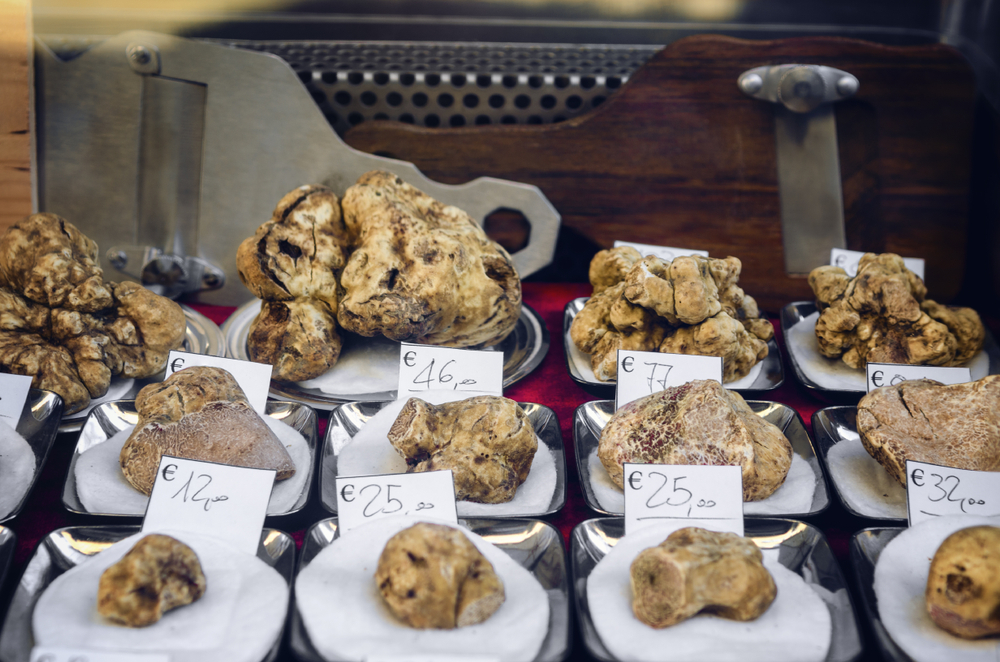
Located in the foothills of the Apennine Mountains, Acqualagna is known as the epicenter for fresh truffles. The world’s most treasured white truffles, Magnatum Pico, come from Acqualagna and Alba in Piedmont. Beyond prized white truffles, Acqualagna boasts nine other truffle varieties, including summer black truffles and superior black truffles. Festivals in honor of this precious product occur year-round. The National White Truffle Fair is hosted from October to November in Sant’Angelo in Vado, a town in the Pesaro and Urbino provinces near Tuscany and Umbria, ideally situated in truffle territory. The regional prized black truffle fair is on the last Sunday of February, and the regional black summer truffle fair happens on the first Sunday of August. So when you make it to Marche, trust that truffles will be waiting to greet your palate.
Since the 5th century B.C., people in Marche have raised pigs, and pork has been an integral part of regional cuisine. However, drastic temperature drops in the winter historically meant the Marchigiani couldn’t keep their pigs through the season. Consequently, locals found ways to preserve all parts of the pig to last throughout the year in the spirit of cucina povera.
Ciauscolo is one of the most beloved regional results of this salumi tradition. It’s a spreadable pork sausage produced in Macerata, Ancona, and Ascoli Piceno under IGP-protected status established in 2009. The sausage is made from shoulder, loin, and pork belly minced with pancetta and flavored with white wine, garlic, fennel seeds, salt, and pepper and then aged for at least twenty days in a natural casing after being smoked over juniper wood for a few days. Enjoy cirasuolo spread over bread or a local pasta dish with olive oil and garlic.
Another must-try cured meat specialty of the region is Prosciutto di Carpegna DOP. Named after Carpegna in the Pesaro Urbino province, this prosciutto is made only from pigs raised in Le Marche, Lombardy, and Emilia-Romagna. Prosciutto di Carpegna ages at least thirteen months following two saltings, resulting in the ideal balance of sweet, salty, and delicate flavors.
Additionally, ciarimbolo is a popular Marche food that exemplifies the region’s love of pork and cucina povera tradition. Ciarimbolo is a spreadable paste made from pork entrails boiled with vinegar, bay leaves, basil, and orange peel for added flavor. Salami di Fabriano, produced in the city of Fabriano, whose meat historically came from Le Marche’s finest pig breeds, is also found throughout the region. Mazzafegato, a pork liver sausage made with nutmeg and orange zest, is also found throughout the region.
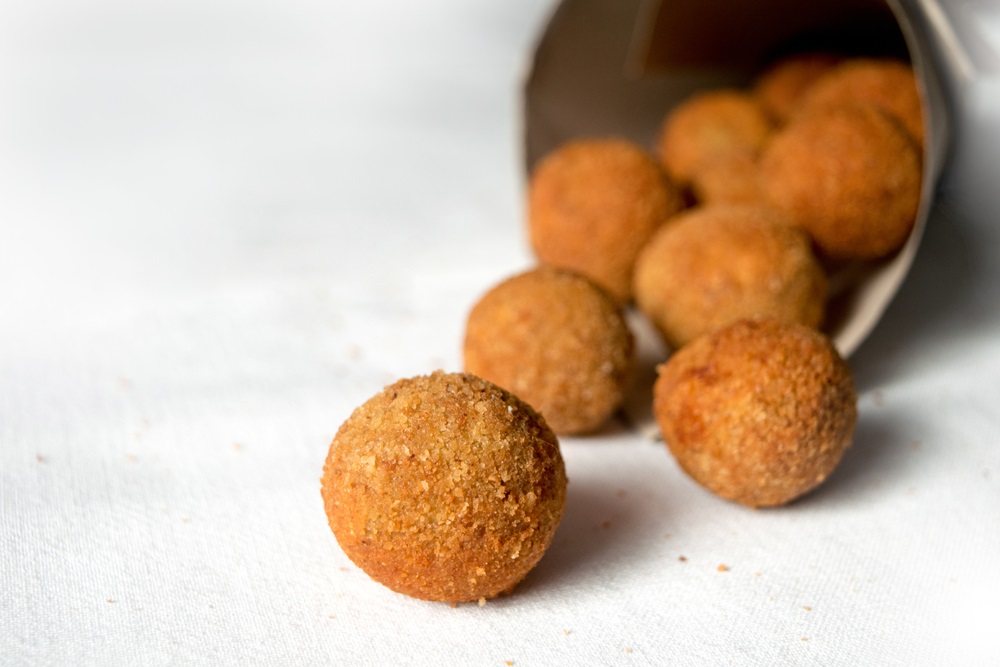
Olive all’Ascolana, or olives ascolana, is one of the most beloved deep-fried Le Marche foods—these savory, bite-sized antipasti hail from the town of Ascoli Piceno. The original recipe calls for Ascolana Terrena olives, a large, local, green variety. To make olive all’ascolana, the olives are stuffed with a meat mixture made of pork, veal, and chicken sautéed with carrot, onion, celery, and perhaps a splash of wine. Next, the mixture is seasoned with Parmigiano Reggiano and nutmeg. Then, the stuffed olives are breaded using eggs, flour, and breadcrumbs before being fried until golden brown and crispy.
Piconi, also known as calcioni of Treia, is a baked savory Marche food resembling ravioli and is typically served around Easter. The dough for these cheese-filled pastries is made from eggs, flour, and oil. Once formed, the dough is cut into discs and folded over a filling of eggs, Parmigiano Reggiano, pecorino, lemon zest, salt, and pepper. After baking the piconi, the cheese filling oozes beautifully from the top of these pastries, making for an irresistible bite.
You can’t go to Marche without trying crescia, the region’s version of a piadina. Many versions abound, but the zones of Pesaro and Urbino are most well-known for their crescia. These flatbreads can be greased with lard or olive oil and enhanced with pieces of pancetta. Crescia sfogliata is another popular take on this regional specialty, commonly eaten warm with a sausage and cheese topping. Its dough is made from flour, eggs, water, and lard. In Urbania, you’ll also find crostolo di Urbania, similar to crescia but made with cornflour instead of regular flour.
Additionally, there is chichì ripieno from the village of Offida in the province of Ascoli Piceno. In the local dialect, chichì means pizza or mass, referring to the dough traditionally given to children to occupy them during the bread-making process. The story goes that the rustic focaccia known as chichì came from this tradition. Chichì ripieno is usually stuffed with tuna, olives, artichokes, anchovies, and peppers. They’re ideal for aperitivo or picnic snacks.
As previously mentioned, Marchigiani embraces fried food wholeheartedly, and fritto misto all’ascolana is the prime example of this culinary tradition. This fried mix includes olives all’ascolana, lamb, or other types of meat like veal or chicken, vegetables, and even a slightly sweet custard.
Creme fritta, also known as cremini, is a fried custard that provides a delicately sweet contrast to the savory flavors of this fritto misto. When not served with the full fried mix, cremini is often enjoyed at the start of the meal alongside olives all’ascolana and crispy, fried sage leaves. Each fried specialty is dredged in an egg mixture followed by breadcrumbs to form the perfect crisp, golden-brown crust when fried.
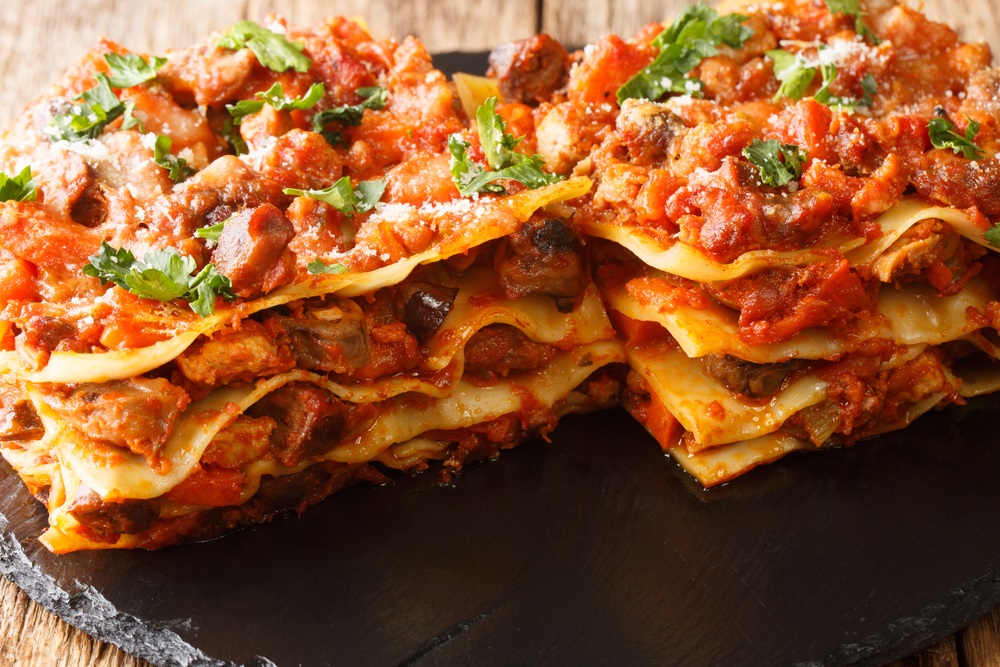
One of the humble Marche foods, which epitomizes the tradition of cucina povera, frascarelli, is a dish based on simple ingredients of rice and flour. It’s named after the ancient wooden tool, a Frasca, used to mix the dough. The dish is prepared first by cooking rice in boiling water for 10 minutes. Next, flour is added to the mixture, boiling them together until it forms a polenta-like consistency with more lumps than typical polenta. Frascarelli is often served with sugo or ragù and topped with a sprinkle of Parmigiano Reggiano.
Legumes have always been an inexpensive source of protein in peasant dishes throughout Italy. Le Marche is no exception, and minestra di ceci alla marchigiana is the ideal dish that exemplifies this tradition. The soup is made from chickpeas (ceci) with a soffrito of onion, celery, carrot, and garlic. Bietole, or beet greens, can also be added. Toasted bread or crostini usually accompanies the soup when served.
This classic Marche food resembles lasagna, though it differs in that traditionally, no bechamel is used, and different meats go into the ragù. Chicken livers, hearts, sweetbreads, and beef are often included in the ragù. However, recipes can vary significantly and may consist of veal, lamb, or duck. If bechamel is not used, milk is added to the top layer of vincisgrassi and grated Parmigiano Reggiano. The dish is named for the Austrian General Windisch-Graetz, who was involved in military activity near Ancona in the early 1800s.
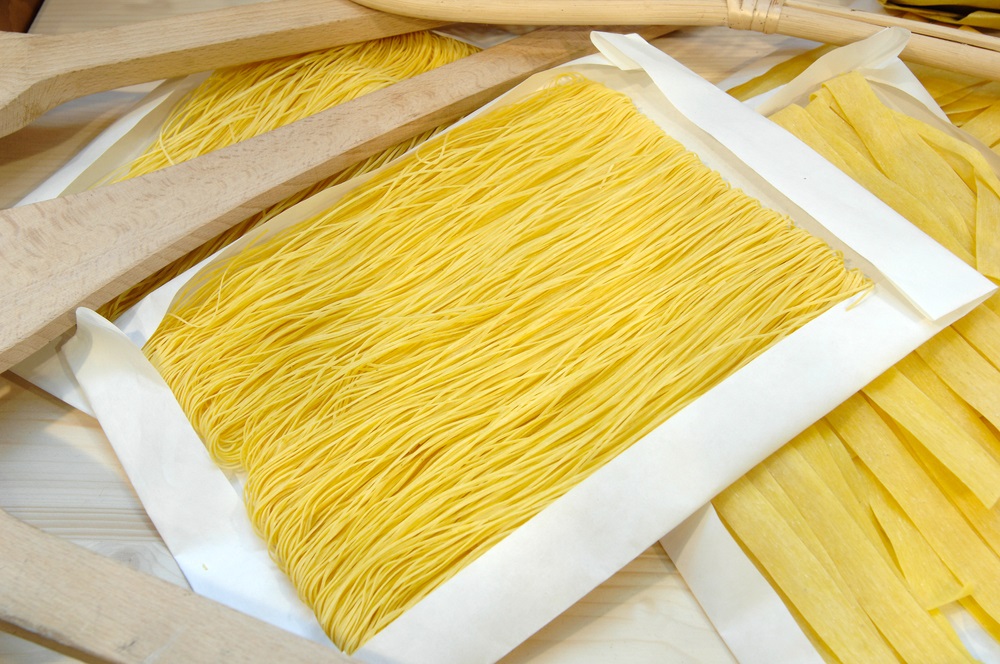
Maccheroncini di Campofilone is the region’s most noteworthy pasta when it comes to Marche food. As with most pasta in the region, the dough for maccheroncini di Campofilone forgoes water and is made with only flour and eggs. More specifically, ten eggs are used for every kilo of flour. In the spirit of cucina povera and extending the life of food, the people of Campofilone figured out that they could make this egg pasta lasting year-round by forming the dough into very thin strands of pasta and drying it out in the sun. The technique dates back to the early 1400s, making maccheroncini di Campofilone over 600 years old. This regional pasta is traditionally served with a creamy sauce made with chicken giblets or a rich, meaty ragù.
Tacconi is a specialty pasta made with fava bean flour. Historically, Tacconi was a peasant pasta dish, as fava bean flour provided enough protein and sustenance when wheat was scarce. The pasta is made from the favette bean flour, native to a small hillside village in the province of Pesaro and Urbino called Fratte Rosa. The traditional preparation involves drizzling olive oil over the cooked Tacconi and mixing in a little grated Parmigiano Reggiano. Today, Tacconi is eaten with a simple, fresh tomato sauce or more complex sauces made with meat, fish, or vegetables.
Passatelli is another type of pasta from Pesaro and Urbino. The dough is made from a mixture of breadcrumbs, eggs, salt, and Parmigiano Reggiano. Lemon zest and nutmeg are also occasionally included. The passatelli are cooked by passing the dough through a potato ricer and into boiling broth. They’re served in soup bowls with a bit of broth and topped with grated Parmigiano Reggiano. Lastly, watch for tagliatelle al Tartufo di Acqualagna, another flavorful yet simple pasta dish in Marche cuisine.
If you’re craving risotto while in Le Marche, opt for risotto del Montefeltro. The dish features authentic Marche flavors, as it’s made with prosciutto di Carpegna and casciotta di Urbino cheese. Lemon zest and ground black pepper are also added to this flavor-packed dish, which is representative of Le Marche.
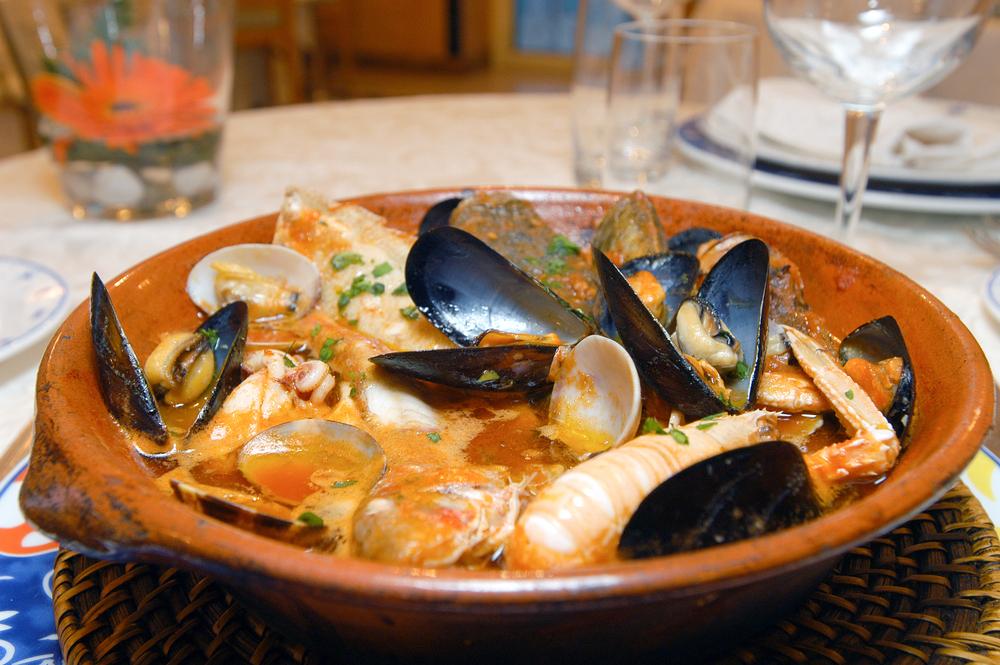
The Adriatic Sea provides an abundance of seafood treasures to the coastal towns of Le Marche. Everything from red mullet to tuna, mackerel, sardines, swordfish, and more is readily available. The day’s catch not sold at local markets or consumed in restaurants turns into brodetto. This tasty fish stew also originated in cucina povera as a way to utilize all scraps and small fish left over from the daily catch.
Every town along the coast has its variation of brodetto; today, more than leftover seafood scraps are thrown into the mix. San Benedetto del Tronto uses green tomatoes and peppers, while in Pescara, the brodetto is more traditional with a flavorful tomato-based broth. Though further south in Ascoli, tomatoes are left out altogether, and saffron is used to flavor the broth. Brodetto all’Anconetana is possibly the best known, as it contains thirteen different types of fish and seafood.
For a seafood experience authentic to Le Marche, look to moscioli. These wild mussels are exclusive to Portonovo near Conero (ensure they bear the Mosciolo Selvatico di Portonovo brand mark). In Portonovo, they’re often prepared with lemon zest, parsley, and garlic. Alternatively, you’ll find them baked and filled with breadcrumbs flavored with olive oil and parsley.
Stoccafisso all’Anconetana is another seafood dish you’ll likely encounter in Le Marche. It’s made with stockfish sautéed with potatoes, tomatoes, olive oil, onion, garlic, capers, anchovies, black olives, white wine, and often herbs like rosemary. Stoccafisso all’Anconetana offers the ideal mix of Mediterranean flavors.
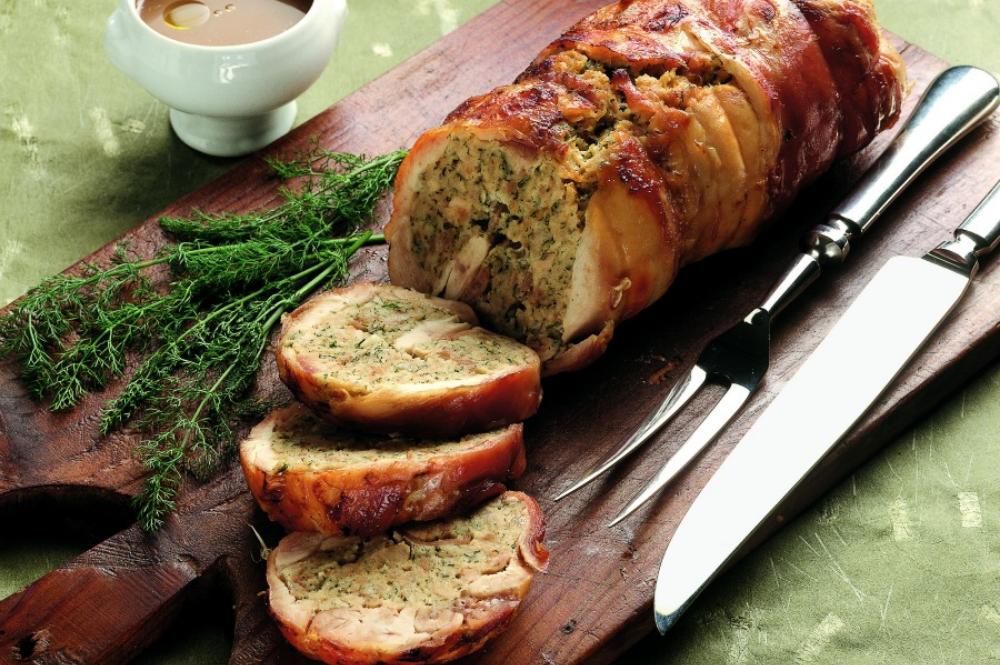
Coniglio in porchetta is classic rabbit preparation from Le Marche. It’s made in the same spirit as porchetta, stuffed with offal and sausage, flavored with wild fennel, and embellished with pancetta. Of course, every family has its variation on the original recipe. Still, the most important aspects are that the coniglio in porchetta has an unmistakable taste of fennel, the meat is tender inside, and the exterior is roasted to a crisp.
Pollo in potacchio is braised chicken prepared in a tomato and rosemary-based sauce:
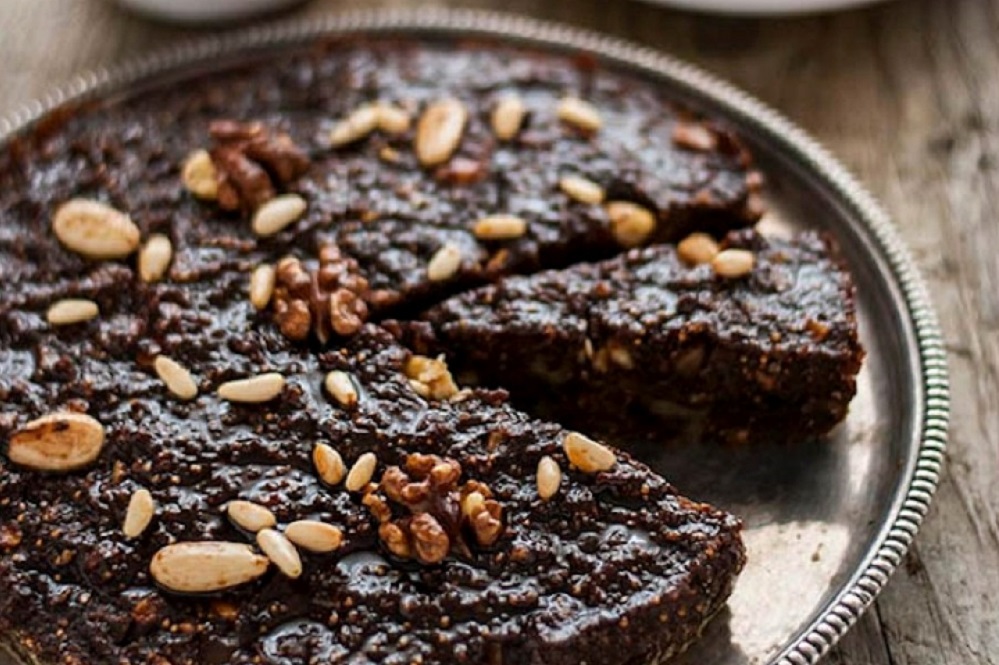
In addition to the savory version of calcioni, there is a sweet version made with the same shortcrust pastry. But for the dessert version, the filling is made of ricotta and lemon zest. These deep-fried treats are sprinkled with more lemon zest and drizzled with honey for just the right amount of sweetness.
Finally, if you find yourself in Marche around Christmas, try frustingo. Also known as fristingo, frostengo, pistengo, and bostrengo. It’s made of stale bread and dried fruit, enhancing the use of old bread. There are over twenty variations that include a plethora of ingredients like walnuts, almonds, dried figs, lemon zest, candied citron, and more. The base of this Christmas cake typically consists of nuts and figs.
Dubbed “the New Tuscany,” the Marche Wine Region in Italy is a hidden wine gem. The region is renowned for its diverse wine offerings, including the notable red wines Sangiovese and Montepulciano and the white Verdicchio, which has recently gained acclaim. Despite its excellent growing conditions and calcareous soils conducive to varieties like Sangiovese, Trebbiano, Verdicchio, and Montepulciano, Marche remains relatively undeveloped with only 20,000 hectares of vineyards. The area boasts a variety of wine towns and attractions, including unique caves and historical sites. The wines of Marche, particularly those from notable producers and appellations, are gaining recognition for their quality and unique characteristics.
If you would like us to customize an exclusive luxury tour, contact us and let us know your travel plans. We offer luxury food and wine tours for private groups of a minimum two guests. In addition, all of our private, chauffeured tours are available year-round upon request.


Philsays:
September 7, 2022 at 4:38 am
Great article...love the area..worked in Ancona a few times and fell in love with the country side and beach towns. Want to live there 1 to 3 months every year. Try to buy the wines when I find them. Loved your article on cuisine Le Marche